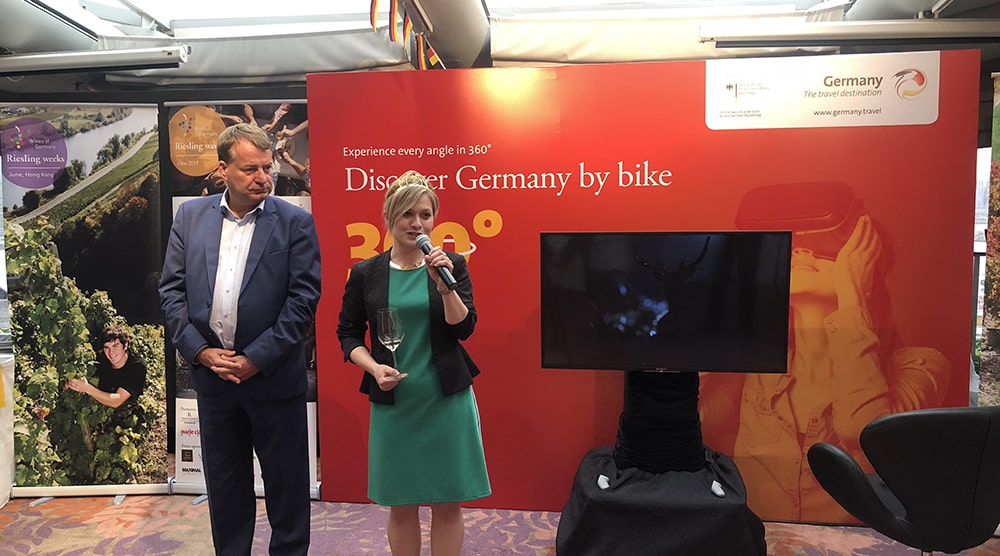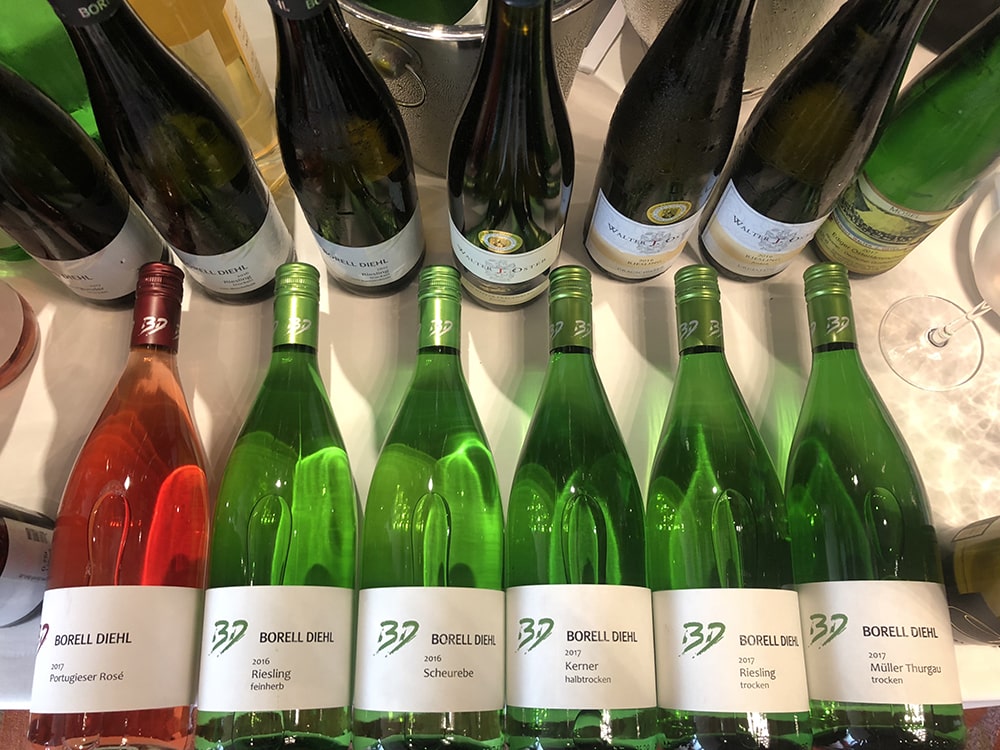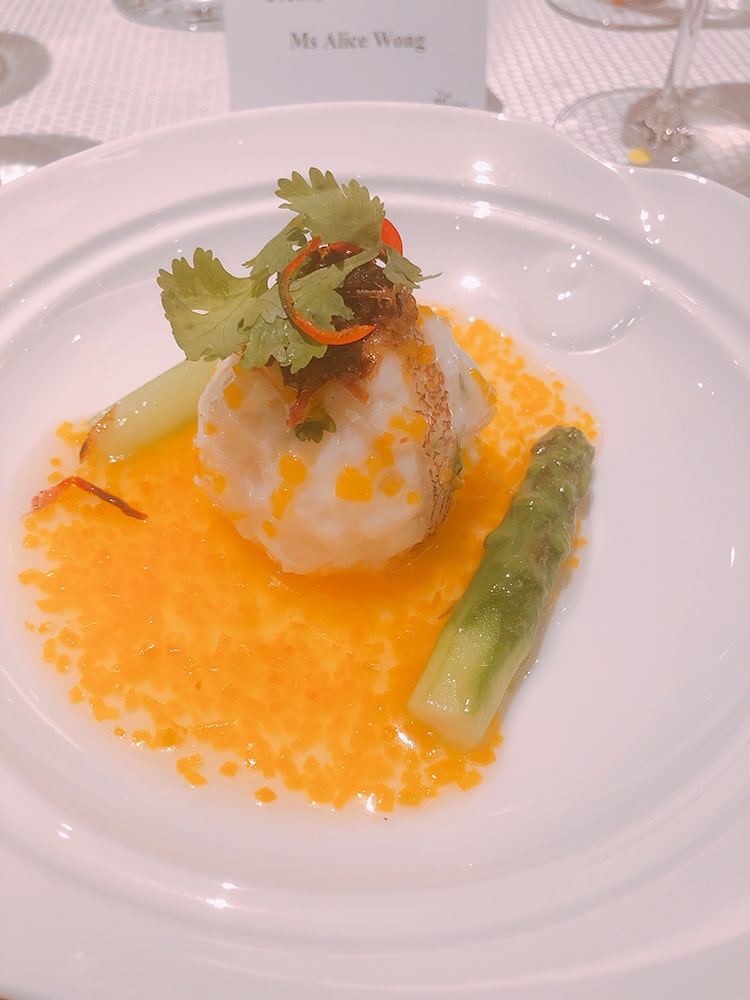THE OTHER GERMAN GRAPES
A long overdue report on Riesling Weeks Hong Kong 2019, but better to be late than never.
Being a zealous German Riesling fan, I have to confess that I had always turned my head away from the other German grapes. Five years ago, I visited a winery in the Mosel, and the owner even called those other varieties “shit grapes” (with respective to using the premium land in the Mosel for non-Riesling varieties)! The truth is, many German whites are either offsprings of Riesling, or part of the “international” Pinot family. What’s the point of investing in those wines, when Riesling is so noble and versatile, serving all purposes from dry Großes Gewäches to aperitif Kabinetts, from Sekts to Eisweins?
It wasn’t until the past couple editions of Riesling Weeks Hong Kong that I started sampling a broader range of non-Riesling grapes. My recent studies in Northern Italian wine appellations have further helped me understand these German grapes and their impact on German-speaking wine regions, such as Austria and Südtirol. When in the right hands, many of these grapes perform well above par, showing distinctive individual characters. Let me highlight a few exciting varieties here that definitely deserve a closer look.
Müller-Thurgau/Rivaner
Professor Müller of Thurgau, Switzerland created this cross in 1882 with the aim of reproducing a wine that would have Riesling’s pleasing aroma, but easier to grow (and hence more productive). Though it did not inherit Riesling’s hallmark acidity, early-ripening Müller-Thurgau’s classic flowery and light Muscat tone are hard to miss. Historically, many of its wines were branded Liebfraumilch (Our Lady’s Milk), sometimes notoriously dubbed as “sugar water” due to excessive use of Süssreserve. Nowadays, quality-conscious producers emphasizes its unctuous peachy notes with balancing acidity, and presents the wine more like a mini-Riesling. Dry versions are increasingly marketed as Rivaner to differentiate its style. For some of the best examples, look out for Müller-Thurgaus grown in Flörsheim-Dalsheim Bürgel and Flörsheim-Dalsheim Hubacker, both of which are exceptional vineyards in Rheinhessen.
Silvaner
Brought from the Danube in 1659, Silvaner remains as Franken’s flagship grape today. After its peak in 1970s with 23% share of the country’s planting, however, Silvaner has seen a steady decline due to competitions from new crossings. While Riesling earns the international spotlight, Silvaner is highly prized back home. The very best of its Bocksbeutel are often not exported, making this fine grape variety even less understood outside of Deutschland. Silvaner offers beautiful notes of bouquet and orchard fruit, but texture is what stands it apart. Its full body and gentle acidity, combined with a slight vegetal tone give it an interesting bite and make it a perfect match with asparagus. Similar to Riesling, Silvaner delivers wonderful wines of all sweetness levels, from trocken all the way to trockenbeerenauslese. It is also well capable of reflecting terroir. Rheinhessen might be the biggest Silvaner producing region worldwide, but it is in Franken where the grape shows its best. Tiny, precious parcels of Escherndorfer Lump (in Maindreieck) and Iphöfer Julius-Echter-Berg (in Steigerwald) were split between superstar Riesling and homegirl Silvaner, showcasing the latter’s focused minerality. Franken’s most famous vineyard, Würzburg Stein, boasts its south by southeast exposure, steepness up to 75% gradient, and Triassic shell-limestone soils that have been diligently protected against erosion and replenished with humus. The 71-hectare vineyard offers world-class dry and noble sweet wines that exemplifies Silvaner’s long ageability. With its affection and commitment to the centuries-old variety, Franken prides itself as the sole German wine region allowed to produce Großes Gewächs from Silvaner.
Kerner
2019 marks the 90th birthday of Kerner, bred in Württemberg and named after a 19th century local poet, Justinius Kerner. Viticulturally, the rather young but successful progeny of Riesling generates higher yield and can grow in less favorable sites. Its pronounced bouquet notes might be reminiscent of Riesling, but Kerner also shows a hint of spice (nutmeg) and slightly coarse texture at times. Young and fresh Kerners are great matches with vegetable terrines and light meats, while richer and racier versions go well with dishes such as poultry and meat with fruit sauce. At Riesling Week Hong Kong Kick-off Celebration this year, out of almost 200 wines, it was the 2017 Borell Diehl Kerner Halbtrocken from Pfalz that delighted me the most. Subtle white blossom on the nose, but displaying expressive mandarin character on the palate, the wine was intense yet pure, and ended with a lingering mineral finish. The touch of spiciness (from the other parent, Trollinger?) adds a kick and makes Kerner more than just another replica of Riesling.
Scheurebe/Scheu
Scheurebe is regarded by Jancis Robinson as the “one early 20th-century German Cross that deserves attention from any connoisseur” in her Oxford Companion. It was bred in Rheinhessen in 1916 and named after its prolific vine breeder, Georg Scheu. Scheurebe is applauded by producers not only because of its ability to reach high must weight, but even more so because the sugar level is elegantly balanced with high acidity, which also renders its wines “many years in bottle”. Strong grapefruit aroma, exuberant flavors of blackcurrant, and a spicy undertone define Scheurebe, allowing it to complement exotic Asian cuisines. Scheurebe-followers have vinified the well-loved variety in various ways to show its brilliance. Müller-Catoir, an esteemed winery in Franken, has made 20 years of impressive, full-bodied, dry Scheurebe, while Weingut Brüder Dr. Becker honors the variety with trocken, kabinett, and sekt versions in the grape’s home base in Dienheim, Rheinhessen. Weingut Hans Wirsching’s Iphöfer Kronsberg Scheurebe Spätlese Trocken S, in particular, is an iconic wine that can be found in top restaurants around the world. It is a pity that such a great variety followed the same path of many other German whites, suffering from a drop in planting in recent years.
Weißburgunder/Pinot Blanc/Pinot Bianco
The lucky white variety that has gained popularity and went from 1% to 5% planting in Germany is Weisßburgunder. Overshadowed for ages by family members Chardonnay and Pinot Gris/Pinot Grigio (a.k.a. Grauburgunder or Ruländer), Weißburgunder is now the rising star in Germany (and Südtirol). Elegant examples showcase fine fruitiness of apricots and pineapples lifted by refreshing acidity. Dedicated winemakers who use oak judiciously generate delicious, complex wines filled with nuttiness and depth. At the Grand Finale of Riesling Weeks Hong Kong, I was happy to sit next to German Wine Queen Carolin Klöckner at Hoi King Heen and shared our tasting notes. Naturally, Riesling dominated the majority of the pairing at the dinner, but we were both fond of the 2017 Philipp Kuhn Weißburgunder ‘vom Kaltsteinfels’ from Pfalz. Initiated with orange and lemon peel, the wine followed through with hazelnut and salinity. The richness and acidity on the palate were just right to pair with the mousses and pumpkin sauce of the Steamed Spotted Garoupa. Many excellent Weißburgunders can be found across Germany, from Schloss Proschwitz in Sachsen in the Northeast, to Weingut Dautel in Württemberg and Weingut Dr. Heger in Baden in the South.
With Riesling taking up about a quarter of the vineyards, and another 12% given to Spätburgunder, the pie is getting small for the remaining 12 traditional grape varieties in Germany. In spite of their low production volume, many of these wines were seriously made and expressed the grapes’ true virtues. A few years back, non-Riesling German whites were uncommon in the export market. Thanks to Wines of Germany, Riesling Weeks Hong Kong, and several committed German wine importers, they have now become more accessible in Hong Kong. It is about time to get these grapes out of obscurity and pay tribute to the devoted producers who continued to embrace these pearls from their lands.
Statistics from http://www.germanwines.de
Article by: Alice WONG, DipWSET, IWA
© 2024 Vinetude - All Right Reserved



